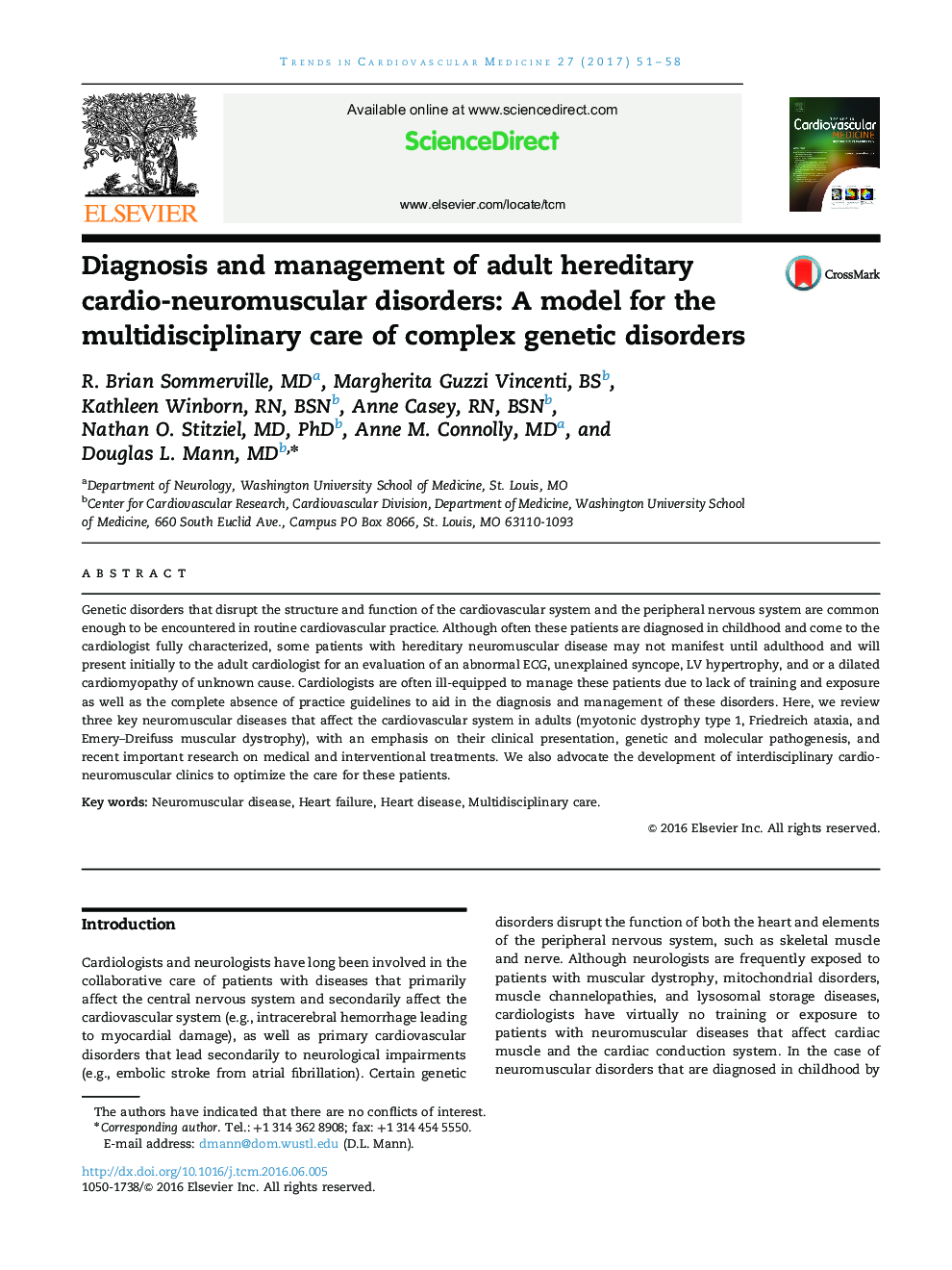| کد مقاله | کد نشریه | سال انتشار | مقاله انگلیسی | نسخه تمام متن |
|---|---|---|---|---|
| 5622388 | 1406175 | 2017 | 8 صفحه PDF | دانلود رایگان |
Genetic disorders that disrupt the structure and function of the cardiovascular system and the peripheral nervous system are common enough to be encountered in routine cardiovascular practice. Although often these patients are diagnosed in childhood and come to the cardiologist fully characterized, some patients with hereditary neuromuscular disease may not manifest until adulthood and will present initially to the adult cardiologist for an evaluation of an abnormal ECG, unexplained syncope, LV hypertrophy, and or a dilated cardiomyopathy of unknown cause. Cardiologists are often ill-equipped to manage these patients due to lack of training and exposure as well as the complete absence of practice guidelines to aid in the diagnosis and management of these disorders. Here, we review three key neuromuscular diseases that affect the cardiovascular system in adults (myotonic dystrophy type 1, Friedreich ataxia, and Emery-Dreifuss muscular dystrophy), with an emphasis on their clinical presentation, genetic and molecular pathogenesis, and recent important research on medical and interventional treatments. We also advocate the development of interdisciplinary cardio-neuromuscular clinics to optimize the care for these patients.
Journal: Trends in Cardiovascular Medicine - Volume 27, Issue 1, January 2017, Pages 51-58
